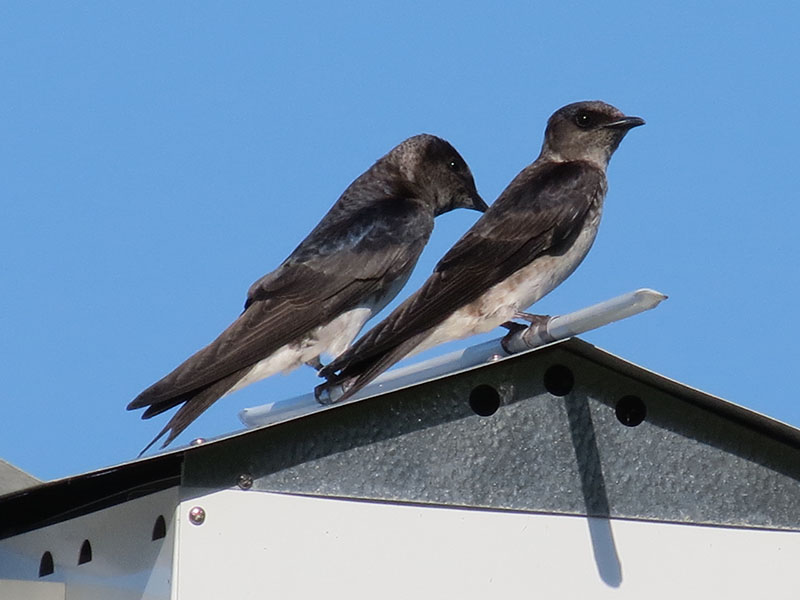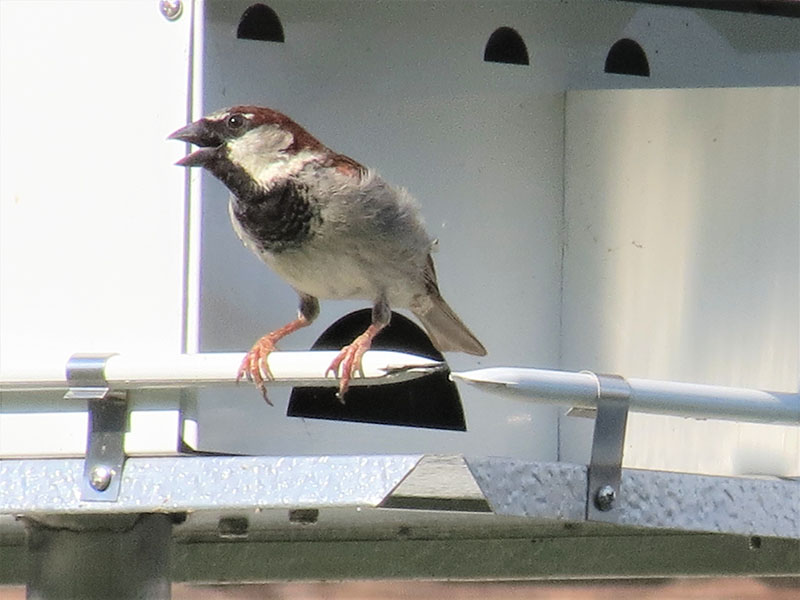January and February are the months to thoroughly clean and wash out your Purple Martin houses! The cleaner the house, the better your chances of attracting nesting martins. Soon now, the old males migrate back to Texas from South America and scope out nesting sites. Females and younger birds follow along later, and they eventually all come together in tight little family colonies. There is safety in numbers, and groups roost together, nest together, raise their young together, hunt together and warn each other of predators. If you are lucky enough to have some choose your martin houses, you will enjoy a constant noisy whirlwind of community activity until the young birds have fledged and they all migrate back to South America in the fall.
Purple Martins are the largest swallows in North America with a 15” wing span but short forked tails. Like all swallows, martins are aerial insectivores that expertly snatch bugs while flying, so you won’t see them at your seed feeders. They prefer to nest near water due to the flying insect hatches that swarm up from lakes and ponds. Although some people believe they are great for mosquito control, studies prove martins eat only a few mosquitoes! They tend to fly much higher to catch their meals.
Unfortunately, there has been a decline in Purple Martin populations over the last few decades due to competing, non-native common house sparrows and starlings. These invasive species take over martin nesting sites, toss martin eggs and kill the chicks in the process. An entire martin condo with a dozen apartments can be forcefully taken over by just one determined male house sparrow!
In general Purple Martin houses have divided apartments, multiple perches, and are on retracting poles. The retracting pole allows the house to be brought down and cleaned before the next season starts. Man-made deterrents such as “sparrow spookers” can be attached to dissuade invasive bird species from destroying martin nests and taking command of the entire house. In addition, many people have had great nesting success by hanging batches of hollow gourds with the proper hole entry size.
For more information consider an excellent resource by Texas Parks and Wildlife. “The Purple Martin and its Management in Texas” by James D. Ray. It can be found online tpwd.texas.gov/publications.
Learn more about the incredible nature in our area by joining a chapter of the Texas Master Naturalist organization. To find a chapter close to you, or to read about the state program, go online to www.txmn.org. Volunteer and get involved!




















